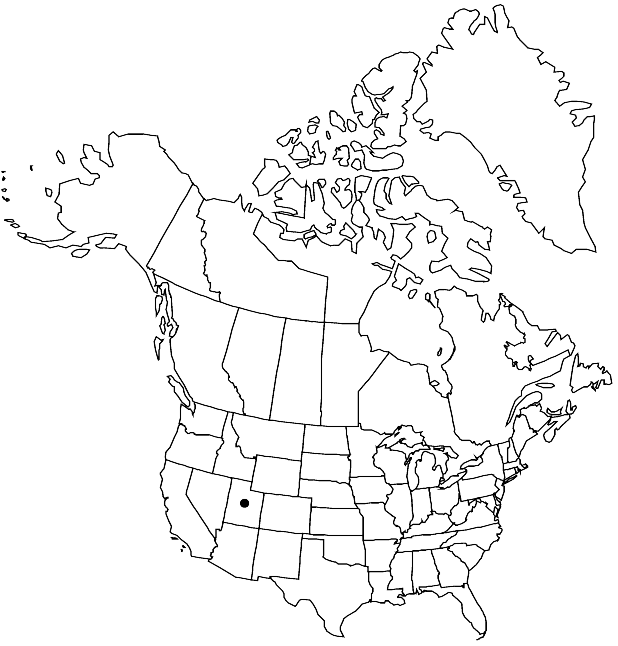Hesperidanthus suffrutescens
Harvard Pap. Bot. 10: 50. 2005.
Perennials; (suffrutescent, woody proximally). Stems several from caudex, erect to ascending, (few-branched distally), 1–3.5 dm. Cauline leaves sessile or petiolate, (to 11 mm); blade oblanceolate to lanceolate or elliptic, (0.7–) 1–2.5 cm × 3–10 mm, base cuneate to attenuate, margins entire or, rarely, obscurely denticulate, apex acute or obtuse. Racemes 5+-flowered, (sometimes 1 or 2 flowers bracteate). Fruiting pedicels ascending, straight or curved upward, 3–10 (–12) mm. Flowers: sepals yellowish green, 4–6 × 1–1.5 mm; petals yellow, 7–11 × 1.5–2.5 mm, claw undifferentiated from blade; filaments 2–3 mm; anthers oblong, 0.7–0.9 mm; gynophore 0.4–0.8 mm. Fruits straight, latiseptate, 1–2 cm × 1.2–2.5 mm; ovules 8–16 per ovary; style cylindrical, (0.5–) 1–2 mm; stigma flat, entire. Seeds 1.5–1.9 × 0.9–1.3 mm.
Phenology: Flowering May–Jul.
Habitat: Mixed desert shrubs, shale barrens, decomposed chip-rock, limy shale
Elevation: 1500-2100 m
Discussion
Of conservation concern.
Hesperidanthus suffrutescens is restricted to the Green River Formation in Duchesne and Uintah counties.
Selected References
None.
Lower Taxa
"elongated" is not a number."thick" is not a number."dm" is not declared as a valid unit of measurement for this property.
